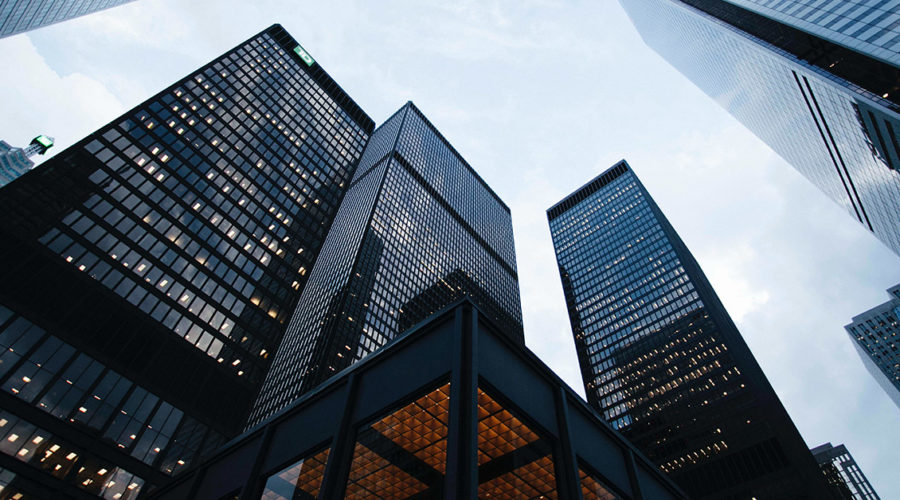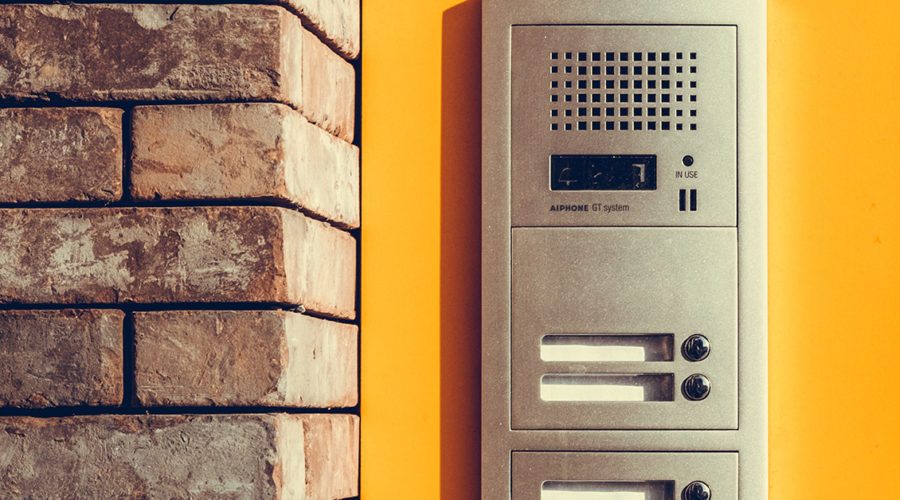Virtual Doorman: Remote Doorman Service of the Year for 2025

Virtual Doorman, winner of the 2025 Remote Doorman Service of the Year award, is a pioneering solution redefining building security and resident services. Founded by Colin Foster, the company offers a cost-effective alternative to traditional doormen by combining smart technology, real-time operators, and AI-driven tools to handle deliveries, guest access, and security monitoring. Unlike conventional staffing, which can cost hundreds of thousands annually, Virtual Doorman reduces expenses by up to 80% while enhancing convenience and safety through features like its proprietary app, customizable guest management, and AI-powered analytics. A Brooklyn case study demonstrates how the system improved tenant satisfaction, cut operating costs by 40%, and boosted lease renewals. With its blend of innovation and practicality, Virtual Doorman is transforming residential living into a more secure, efficient, and resident-centered experience. Click here to read the full article.
Virtual Doorman Offering Free, Expanded Services for All Customers During COVID-19 Emergency

Mann Publications Mann Publications “We have been closely monitoring the situation and want to make sure each and every one of the thousands of people we serve feels safe and protected during this time,” said Colin Foster, founder and chief innovation officer of Virtual Doorman. “We are aware this crisis has deep ramifications into how we conduct our daily lives and we hope that through the offering of free upgrades to our packages and expansion of our hours we will be able to bring additional safety and security not only to our customer base but also to their building’s existing personnel.” As the COVID-19 crisis magnifies, Virtual Doorman is committed to continuing to offer services that under this particular crisis are not only convenient but, in some cases, absolutely necessary. Virtual Doorman’s personalized service uses integrated digital CCTV, cameras, video intercoms, access control devices, and remote operators at its Doorman Command Center. The company’s services include building security; building access for residents, deliveries, and guests; as well as virtual concierge services. Virtual Doorman’s Command Center has evolved into one of the most advanced technical operations in the nation. The company’s first national emergency crisis came during Hurricane Sandy in New York in 2012. As other remote doorman companies struggled, Virtual Doorman’s Command Center in Florida provided constant and uninterrupted service throughout the emergency. Today, many Virtual Doorman customers have found a “silver lining” because they were uniquely prepared to handle the current situation. Social distancing is not easy for buildings with traditional doormen and onsite staff. Buildings that were forward-thinking and already had technology in place have been able to continue providing critical services while keeping everyone safe and the building running smoothly. These buildings have found Virtual Doorman to be helpful as the company has been able to cover shifts so doormen and supers can stay safely at home. “Virtual Doorman’s team of remarkable professionals is used to going the extra mile,” added Foster. “We are tremendously proud of our team and are deeply thankful for their dedication and support as we expand our services and look to provide additional comfort and relief to our clients during this trying time. Although our software is known for being best-in-class, we believe what sets us apart is not our technology but the people behind it.” Virtual Doorman has been developing and perfecting its suite of remote doorman services since it was founded twenty years ago. continue reading
Virtual Doormen: Deliveries in the Age of Virtual Staff

The Cooperator New York | By A.J. Sidransky go to this website Online services have revolutionized everything – but especially shopping. Virtually anything you want is now at your fingertips, and virtually everything can be delivered. Online versions of every service, from food delivery to furniture to pharmaceuticals, can arrive at your door without you ever leaving the comfort of your bedroom. Online services are revolutionizing the building service industry as well. Gone are the days of the post office box, when residents of non-doorman buildings had to rent an address at the local post office to receive packages, or have everything sent to their office, then had to drag it all home on a crowded subway packed with irritable commuters. Services such as Butterfly MX, Academy Makilbox, Cyberdoorman, and Virtual Doorman, just to name a few, are making life easier for residents of limited service buildings. How Does it Work? Obviously, having near-anonymous personnel coming and going in residential buildings requires a great deal of thought – not only to logistics, but also to security. For most delivery systems, security is provided through a web based information management platform that streamlines communications between residents, building managers, and a command center in the form of an interactive web portal. The main entry point to a client building is equipped with an alarmed card-access lock, a two way audio communication module and a video camera, which in turn is connected to a digital video recorder (DVR). Whenever a package arrives, the delivery person initiates a contact with the command center through the portal. The courier is instructed to go to a storage room, also under electronic surveillance. The command center unlocks the door to the storage room and verifies that the courier leaves the package and doesn’t take anything from the package locker. The courier is monitored until he or she has left the building, and the resident is notified of their delivery by the command center by phone, email or text, whichever they have chosen for notification that a package has arrived and can pick up the package when they arrive home. No muss, no fuss, no Christmas tip. Smartphone Apps Some companies like provide users with an app for their smartphone that provides the user to opportunity to control their deliveries from anywhere. They can open and manage doors from any location. For example, according to their website, “ButterflyMX transforms any smartphone into a mobile video intercom system. Once the intercom has been installed in the building and the app has been downloaded, “Visitor calls from the intercom will come through the app as a video call wherever you are, so you can view the visitor before granting access to the building.” ButterflyMX’s system also provides for virtual keys, messaging options, and digital timestamps. These systems cost between $5,000 and about $7,000 to install, depending on specifications, building size, and other variables. Greg Cohen, President of Impact Management, a co-op and condominium management firm with offices in Manhattan, Westchester and Long Island, says a number of their clients in limited service buildings are using these types of systems and describes yet another iteration. “I saw the concept a few years ago on Shark Tank. It’s called doorman.co. It doesn’t cost the co-op anything. The recipient has packages shipped to doorman.co, and they deliver the package to the resident at a more convenient time. The company delivers late into the evening. The user pays a small fee per package.”
One Door Closes, A Virtual One Opens

Mann Publications | By Mahzabeen Alam Imagine walking into your building and a voice calls your name. You look around you, but there’s no one there. It’s your virtual doorman greeting you. No, there isn’t a hologram of a man or woman in concierge uniform, but instead a camera on the wall being monitored by remote personnel. Since the inception of virtual doormen almost two decades ago, many New Yorkers have been enjoying this perk. With the rise of technology, companies like Virtual Doorman, Cyberdoorman, and ButterflyMX are creating alternative methods to surveillance and concierge services. Luxury buildings, such as those in East Williamsburg, Woodside, Astoria, and the West Village are turning to remote services to offer security and safe delivery of resident packages. So, what does it mean to have a remote doorman? They essentially function like this: when a package arrives, the delivery person first makes contact with the command center and is directed to a locked storage room where they leave the package. The remote doorman carefully monitors the courier’s activity until he or she leaves the building, ascertaining the safety of the packages. But are remote doormen really revolutionary, or should we stick to the motto, “If it ain’t broke, don’t fix it?” Consistency and Surveillance For starters, it depends on what kind of condo/co-op building you’re trying to represent. The busy and bustling New Yorker might not be too bothered with substituting a physical doorman with a virtual one. The promise of privacy and non-judgmental looks as residents walk in with their grocery haul offers more than just physical security. Therefore, there is a sense of peace and freedom that a physical doorman can’t offer. Not only can residents rest easy knowing their packages have been delivered safely, but they can also appreciate the absence of someone watching their comings and goings. Then there’s the cost of rent. For those looking to save up for a vacation or perhaps already have a healthy spending habit, saving a few hundred bucks on rent would be a burden off their shoulders. Labor costs are high, and, in addition to the annual wage, New York etiquette requires doormen to receive regular tips. In the past, there have been threats of doormen going on strike over fair contracts. However, remote doormen eliminate this concern and allow tenants to put a nice extra chunk into your savings. And the perks continue: instead of being hired by building managers, remote doormen are simply recruited by security companies like Virtual Doorman, which offers stability not only for residents, but for the doorman as well. Residents wouldn’t have to walk down to the lobby one day only to find their doorman had been laid off the night before or impulsively decided to quit, leaving the building without security or a package delivery service. The Human Touch news The paradox with smart technology, such as the remote doorman, is that it can also be fragile at times. One technological malfunction can result in a total system shutdown, resulting in lost security, as the remote doorman is not there to reassure concerned residents. Power outages ranging between minor street-long ones to the infamous Summer 2003 blackout can be detrimental to all the amenities and security that remote doormen provide. Moreover, it wouldn’t take just a power outage to take down the system, but also internet disruptions. Something as minor as a loss of connection between the command center and the remote doorman can result in getting locked out of the building with no alternate way in. With how fickle technology can occasionally be, it would be uncertain as to how long residents have to wait to get in. This certainly wouldn’t be an issue with a physical doorman, who could take the place of a complex technological system. Besides offering support during blackouts, physical doormen provide something that a remote one can’t: a human touch. Beyond handling packages with a careful hand that random delivery people may lack, they take stock of tenants’ needs. In a city like New York, where we are constantly surrounded by people and yet barely acknowledge one another, doormen offer a way to be present. They are more than just a person opening the door for you or informing you of a package delivery—they are a friendly neighbor, a comrade who offers safety and lends an actual helping hand. The exciting new developments that percolate in apartment buildings can add to a comfortable and secure living environment, but, at the end of the day, it’s up to you as a manager to decide what makes your building complete.
Virtual Doorman: Real Savings.

Entrepreneur Regal Real Estate has selected Virtual Doorman (VDM), the remote doorman service bat provides traditional doorman services remotely, to offer services in four of its Manhattan properties, namely: 21 Maiden Lane, 33 Union Square, 9 East 16th Street and 112 Fulton Street. Regal ultimately plans to install VDM throughout its entire 22-multifamily building New York City, portfolio.
Brooklyn Residential Buildings Go High-Tech

Brooklyn Daily Eagle | By Linda Collins BROOKLYN — Virtual Doorman, a high-tech electronic doorman system, is finding acceptance in Brooklyn. Several new condominium buildings have installed the service, including Park Slope’s The Argyle at 251 Seventh St. at Fourth Avenue; 101 N. 5th St. in Williamsburg; and 585 Sixth Ave. in South Slope.
The EZPass of Doormen

The New York Observer | By Bonnie Kavoussi From Ocala, Fla., and Unity, Maine, the fate of New York doormen may be decided. The two towns headquarter the remote command centers of the Virtual Doorman, a technology that, as the name suggests, acts as a building’s doorman in everything but a warm body. Plus, it’s cheaper: $9,000 to $17,000 for installation, maintenance extra, while a real, live doorman might run a building $80,000 annually.
Ding Dong the Doorman’s Dead!

New York Post | By Sarah Ryley It’s the rise of the cyborg doorman. Cash-strapped developers are trying to save bucks and lure buyers with lower common charges by installing “virtual doormen” – staffers sitting in command centers as far away as Florida who can buzz guests and deliveries into buildings at a fraction of the cost of a regular doorman. One Manhattan-based company, Virtual Doorman, saw its sales jump last quarter· with 10 new buildings, its biggest quarterly increase since· starting in Cyberdoorman, based in The Bronx, said business could double this year to 76 buildings.
Today in New York

Hip to be Small

Security Products When people think of Manhattan, they usually envision soaring high rises equipped with white-gloved doormen or charming and luxurious prewar brownstones. Yet within the last year, the real estate market has seen a rise in a new and exciting breed of buildings — what many are dubbing “the boutiques.” A growing pocket of new buildings, as well as older refurbished ones, have created a resurgence of interest from homebuyers and sellers within Manhattan. These boutique buildings, usually with less than 40 units and consisting of younger, tech-savvy clientele, are smaller than their more traditional counterparts, yet have fetched record prices for developers and homeowners alike. Why the trade in taste? It’s all about demographics. For this clientele, these smaller buildings provide a much more intimate and personalized feeling without the high costs associated with maintaining the traditional amenities offered in older full-service buildings. In addition, these high-end buyers are looking for some degree of anonymity from their neighbors and the doorman and prefer the smaller set-up.
